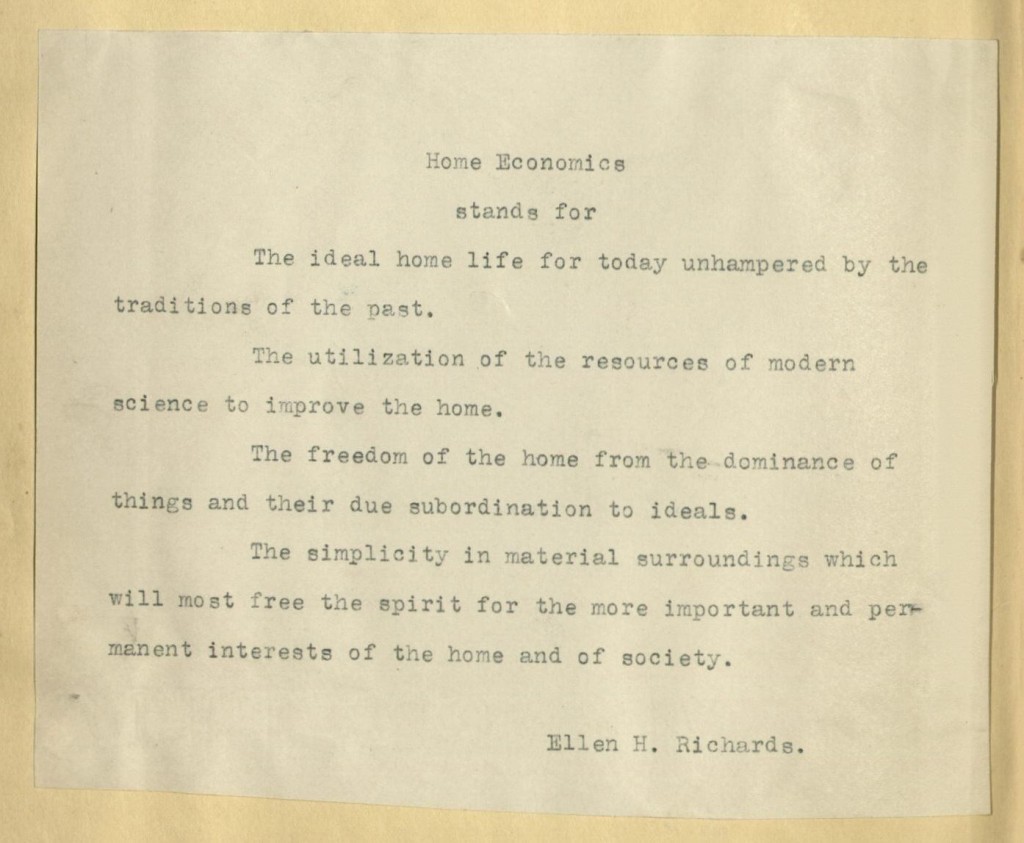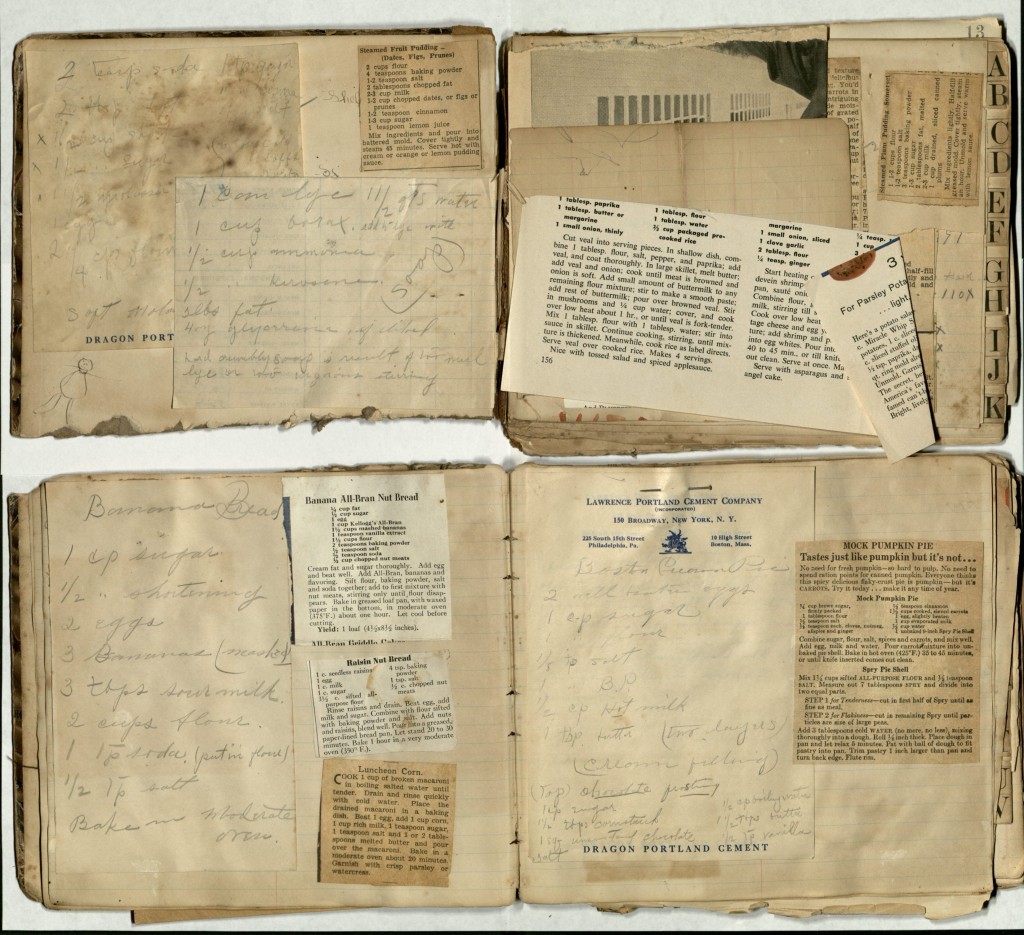People periodically contact Special Collections to ask if we would be interested in acquiring some old Vermont books that they found in an attic or received from an elderly relative. One recent box contained a collection of home economics textbooks used at UVM during the 1920s and 1930s that we were not able to add to either the Wilbur Collection of Vermontiana or the Rare Books collection. Buried beneath the textbooks, however, there were two items that are now part of the Vermont food and cookery collection.
The first unexpected gift is a notebook of weekly cooking lessons, written in a very neat and careful longhand. It appears to provide a record of one of the Ellen H. Richards Clubs for girls that UVM’s first home economics professor, Bertha M. Terrrill, praised at a meeting described in the St. Johnsbury Caledonian on January 13, 1915. Before coming to UVM in 1908, Terrill studied with Richards, a scientist who created the field of home economics.
The first page of the notebook is labeled “The Ellen H. Richards Club,” and is inscribed “Mrs. Leon S. Gay.” Mrs. Gay recorded 16 lessons offered to the Cavendish (Vermont) Cooking School from November 1914 to March 1915. Mrs. Gay, whose family owned a woolen mill in Cavendish, may have been the instructor. After an introductory first lesson, the second lesson began with a discussion of the home economics movement and the story of Ellen Richards’ remarkable career, proceeded to a lesson about milk, and concluded with a recipe for hot cocoa.
The lessons demonstrated a modern approach to cooking and eating based on science and efficiency. Most of them focused on the characteristics of a single basic ingredient or component, including its chemistry and nutritional value, tips for cooking, and recipes using that ingredient. The lessons covered milk, eggs, cream, batters and doughs, fats and oils, pastry, and vegetables (three lessons). One lesson provided instructions for “laying the table.” Mrs. Gay may not have finished her record, as loose notes and recipes remain between the pages.
The second item stands in sharp contrast to Mrs. Gay’s carefully ordered and presented record of cooking lessons. An unidentified person pasted recipes and household hints clipped from newspapers and magazines and written on odd scraps of paper into an account book from the 1880s. The account book may be from a sawmill in Shelburne, Vermont, but identifying information on the inside front cover is obscured by recipes for soft molasses cookies, soap, and steamed fruit pudding.
Curiously, the ledger was cut in half before it was recycled. The pages of the bottom half have been completed covered with recipes and tips, but only a few pages of the upper half have been reused. The empty pages and the many loose recipes suggest that the book was still a work in progress when it was abandoned. Judging by dates and news stories on some of the clippings, the recipe collection was assembled during the 1950s and early 1960s.
Despite the popularity and spread of cooking and canning clubs in Vermont during the early twentieth century, surprisingly little information about their activities survives, making Mrs. Gay’s notebook an especially significant find. Personal recipe collections are also rarely preserved, and the example from the bottom of the box of old textbooks is a good addition to the published cookbooks, advertising, menus and other manuscripts in the Vermont food and cookery collection.




